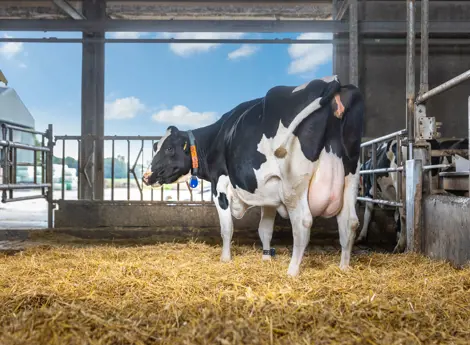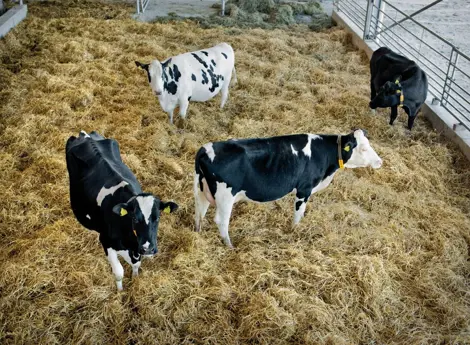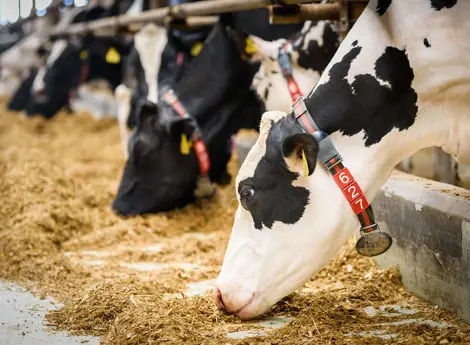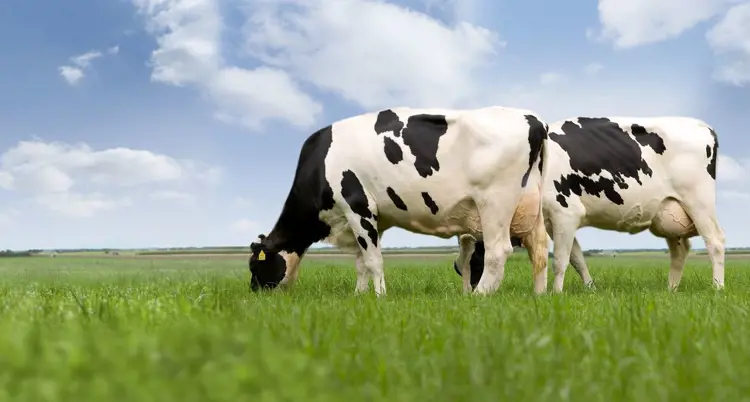
Using those values, bypass fat can be a valuable raw material to improve production characteristics and/or the health of cows, leading to a higher profitability.To validate the estimated energy values, the effect of bypass fats on the Dry Matter Intake (DMI), milk yield, milk solids and the resulting economic results were studied. A large dataset consisting of more than 65 in vivo trials was created. By using meta-analysis methods the effect of different types of bypass fats were evaluated.
BYPASS FATS CAN AFFECT DMI AND MILK YIELD
Often bypass fats are used to increase total net energy intake of dairy cows in early lactation by increasing the energy density of the diet. It is also known that oils and certain bypass fats might reduce DMI. All effects are based on the addition of 0.5kg/cow/day bypass fat in diets where the crude fat level of the total diet did not exceed 5.5% in the dry matter.
From Figure 1 it is clear that Ca soaps of poly unsaturated bypass fats (Ca-soap PUFA) have a clear negative response on total dry matter intake. It is also clear that the other bypass fats (at 0,5kg/cow/day) do lead to an increased total dietary energy intake. In other words energy intake via bypass fat is greater than the loss of energy intake due to a reduced DMI. All fat sources have a (significant) positive effect on milk production.
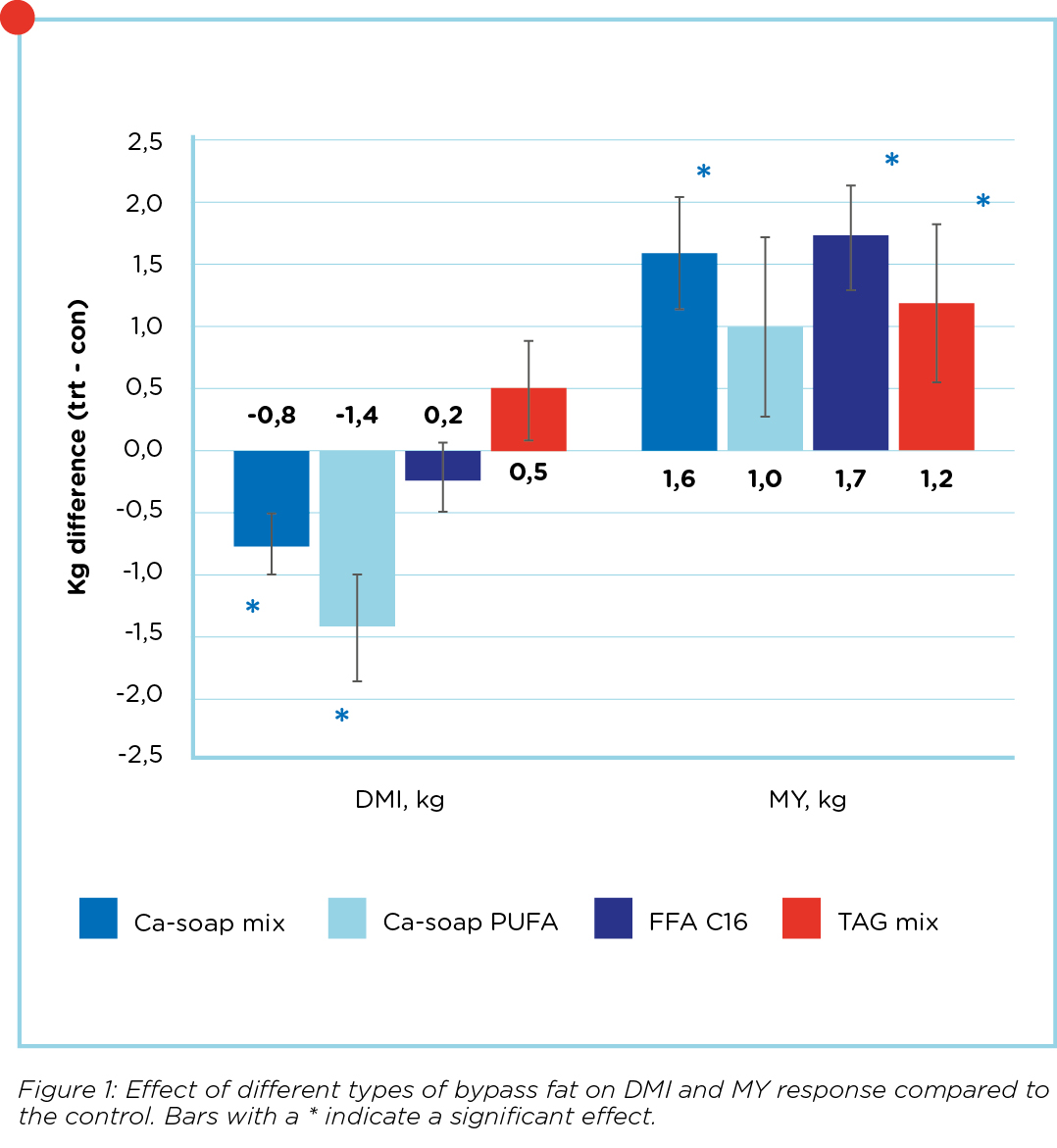
NOT ONLY MILK YIELD, ALSO MILK SOLIDS CAN BE AFFECTED
In many countries milk price depends on milk yield as well as on milk solids. In Figure 2 the effect of different bypass fats on milk fat and milk protein content is presented.Clearly poly unsaturated Ca-soaps have a negative impact on milkfat and milk protein whereas FFA (Free Fatty Acid) mixes of especially C16:0 have a positive effect on milk fat percentage. Milk protein is not affected by FFA.
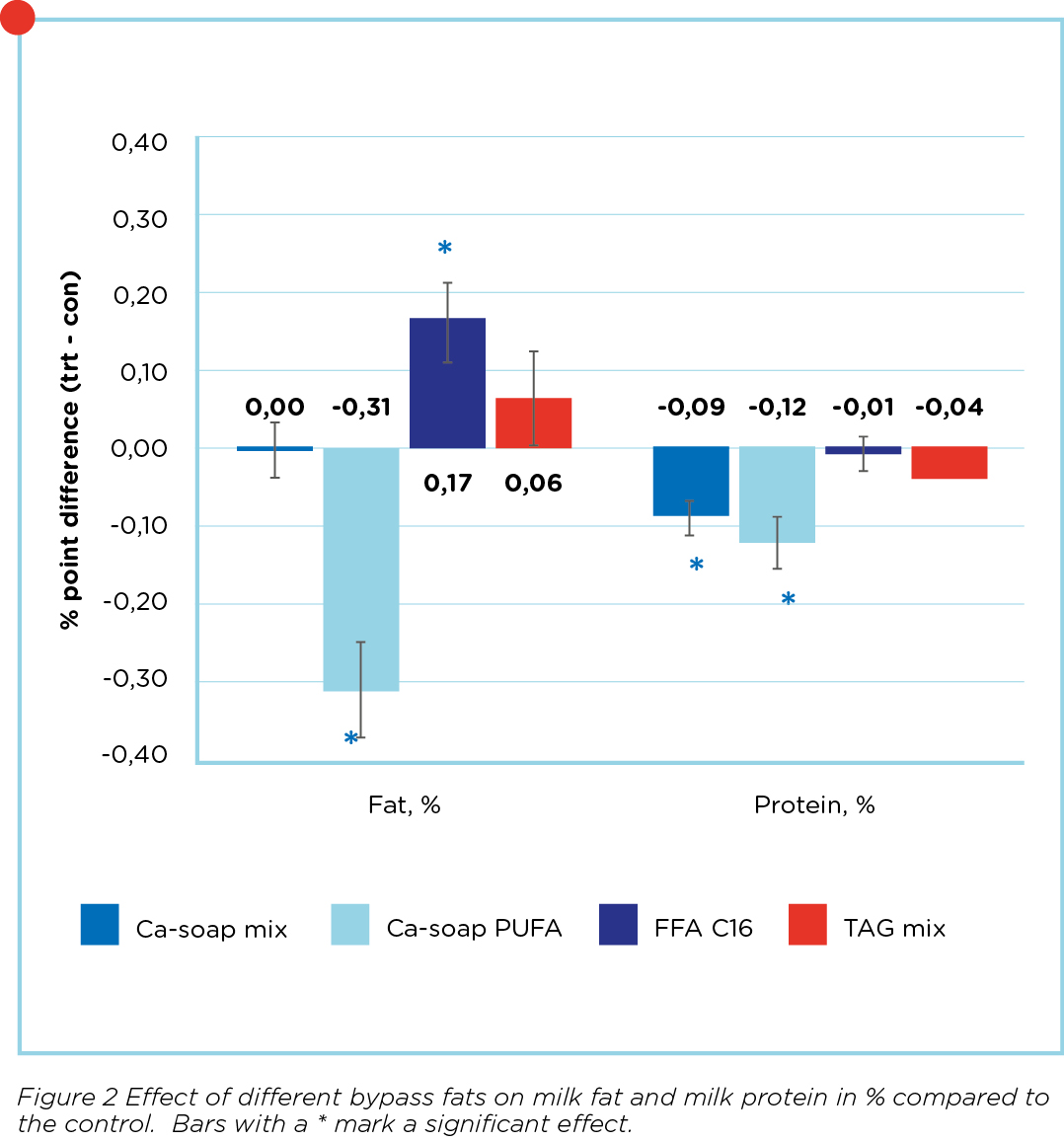
ECONOMICALLY VIABLE?
To evaluate the economic benefit of using a bypass fat many factors have to be taken into consideration. Next to the effect on total DMI and production responses, also additional labor, milk payment system and additional effects on the cow, like fertility are important. A possible way of calculating the effect is expressed in Table 1. In this calculation the observed effects on technical results are used and projected on an imaginary herd of cows eating 22kg DM with an average milk production of 30kg; 4,00% fat and 3,4% protein.Based on this calculation and prices, the use of FFA16 resulted in an additional income of €0,32 /cow/day. The use of Ca-soaps resulted in additional income of €0,22/cow/day. PUFA Ca-soaps and TAG (Triacylglycerol) mix did result in negative figures of €-0,39 and €-0,12 per cow per day respectively. As mentioned, possible additional effects on fertility are not taken into account in this calculation.
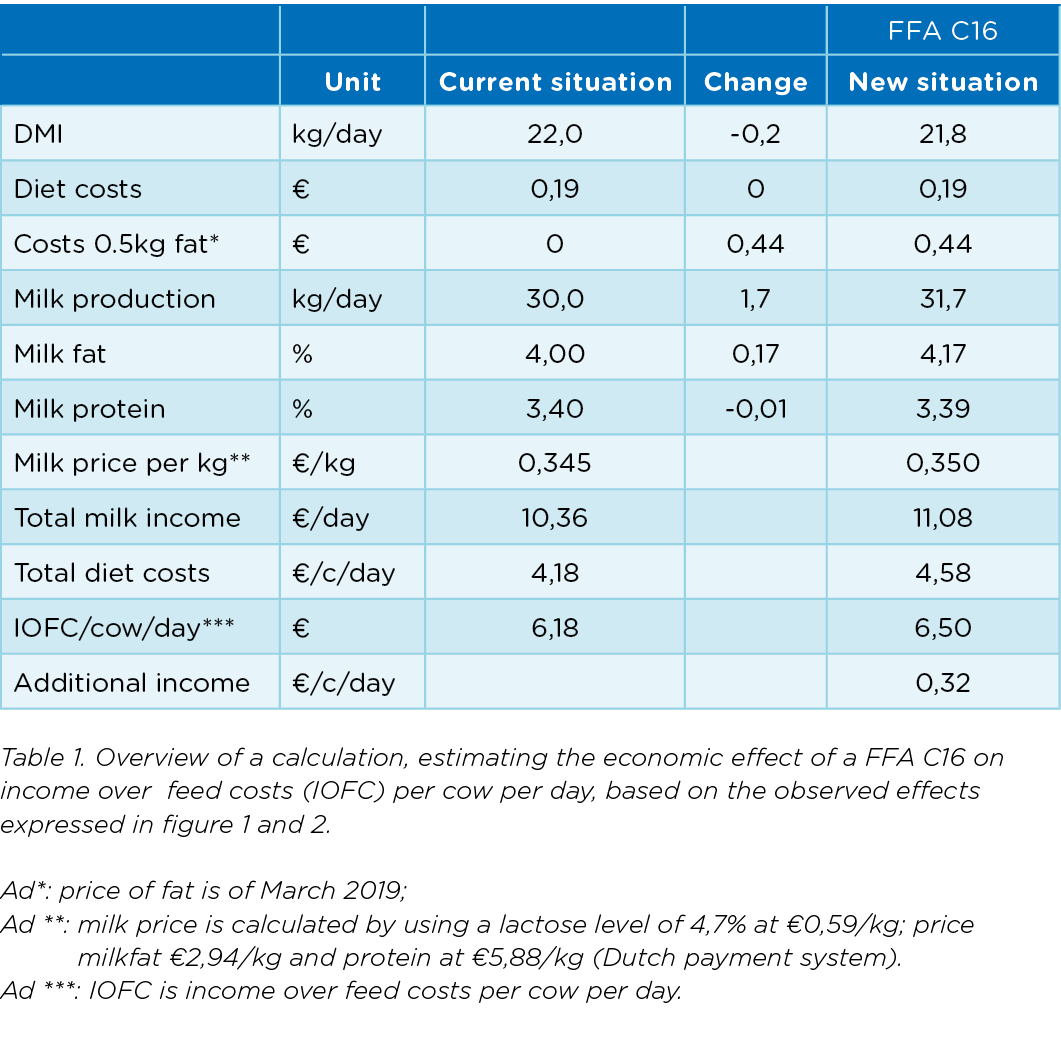
IMPLICATIONS
There are many bypass fat products on the market. Each category has a different effect on dry matter intake and milk production parameters. Based on the objective (like increased milk fat or higher IOFC) one source can be preferred above another. It can be economically beneficial to include bypass fats in the diet of dairy cows. However this is strongly depending on milk-; feed- and bypass fat prices. Therefore the use of bypass fats in diets should be regularly evaluated.

